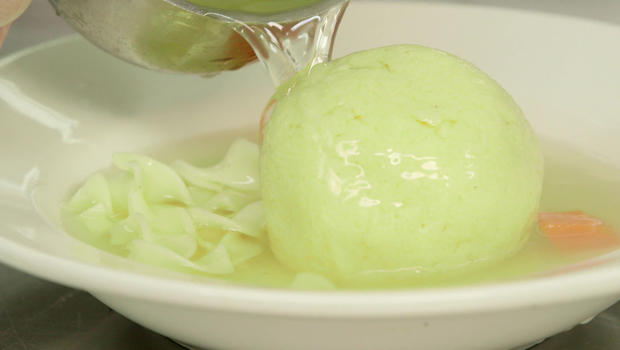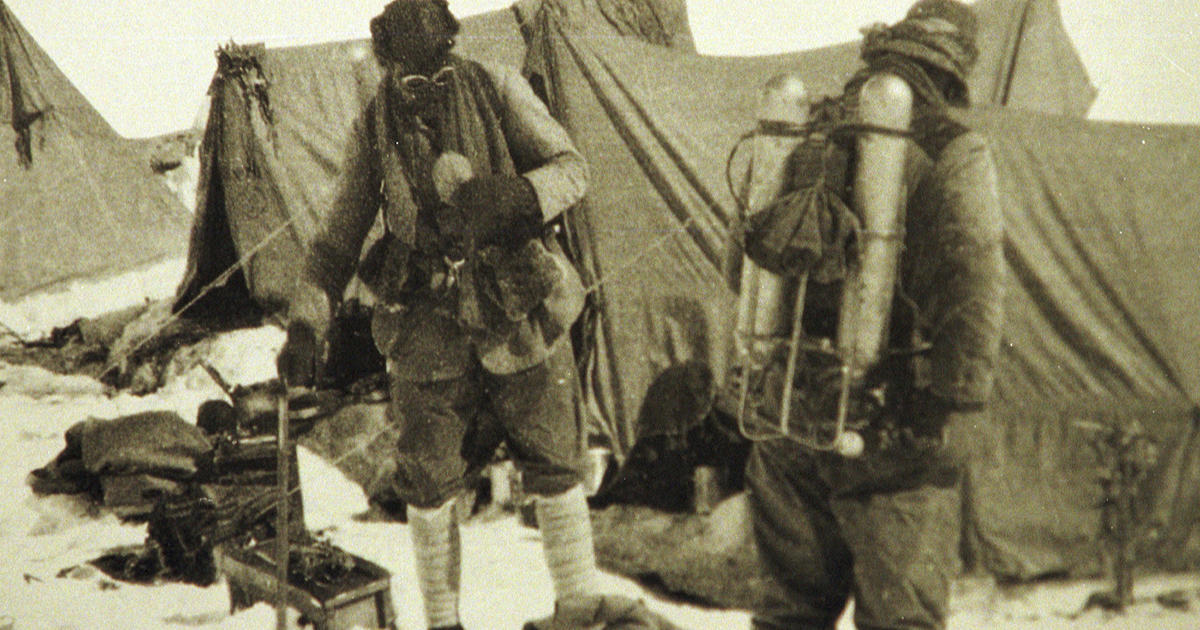Chicken soup: The story of "Jewish penicillin"
At the first sign of sniffles, what do YOU do? Take two aspirins and go to bed? Chug some cold medicine? Some say the best cure is one of the oldest, and the tastiest: Chicken soup, which some consider "Jewish penicillin."
Correspondent Nancy Giles asked cookbook author and food historian Joan Nathan, "Are there particular properties that can help with a cold?"
"When I was making soup the other day, there was something about the aroma of chicken soup – it just felt good," she replied. "And when I have a cold, it's the first thing that I'll get."
Nathan (who some call the Jewish Julia Child) says chicken soup has been on the menu for centuries. "The first recorded mention of chicken soup was somebody named Dioscorides, who was an Army surgeon general in Rome," she said. "But then later, Maimonides, who was a Jewish philosopher-scientist, said that chicken soup was a panacea for so many different things: asthma, weight gain (like bone soup is today), leprosy."
Since Maimonedes' time, chicken soup has been prescribed by grandmothers and doctors alike. But many believe there really is evidence to support the prescription.
As chicken cooks, it releases an amino acid resembling properties in medicine used to fight infections such as bronchitis. And in 2000, a study found that chicken soup may also reduce inflammation – less inflammation equals fewer symptoms.
Our love for chicken soup is universal (Nathan said, "It smells so good, I can feel it going right to the core of my stomach"), but there are as many recipes as there are countries where it's eaten.
In Greece, lemon and egg are added to chicken broth. In Thailand, plenty of lime juice and coconut. Southerners add dumplings, and for Jews … matzo balls.
Recipes:
- Joan Nathan's Chicken Soup
- Joan Nathan's Matzo Balls
- Chicken Soup from 2nd Ave. Deli
- Matzo Balls from 2nd Ave. Deli
Giles asked, "So, matzo balls started out being made from the actual matzo. And now, are they made from, like, matzo meal?"
Nathan replied, "Manischewitz came along, and put out a cookbook (1930's "Tempting Kosher Dishes") for when they made matzo meal. And the cookbook talked about heavenly 'Alsatian' balls. They didn't call it matzo balls. That's when they really became part of American culture, through commercialism, and through people wanting to do things a little bit easier."
Traditionally, the matzo ball was served at Passover, the Jewish holiday commemorating the Israelites' freedom from Egypt.
At New York's 2nd Ave Deli, where they've been ladling chicken soup and matzo balls into bowls since opening in 1954, executive chef David Teyf was asked if he has a matzo ball preference: fluffy or dense?
"Fluffy," Teyf replied. "The fluffier the Matzo ball, that is the ultimate. You should take a spoon and be able to put it on your spoon, but it needs to be airy."
Deli owner Jack Lebewohl offered the secret for making matzo balls: Schmaltz, otherwise known as chicken fat. "My brother had a saying, he said, 'Anyone who makes matzo balls not with schmaltz, it's an assimilated Matzo ball," he said.
After cooking, these matzo balls will join their mate – chicken soup.
When asked what makes their chicken soup so iconic, Teyf replied, "The quality of the chicken we use, the amount of bones that we use and, just, less is more."
Less IS more. But what the soup lacks in ingredients, it more than makes up for in history, tradition and family.
For more info:
- "King Solomon's Table: A Culinary Exploration of Jewish Cooking from Around the World" by Joan Nathan (Knopf), in Hardcover and eBook formats, available via Amazon and Indiebound
- joannathan.com
- 2nd Ave. Deli, New York City
- "The 2nd Ave. Deli Cookbook: Recipes and Memories from Abe Lebewohl's Legendary Kitchen" by Sharon Lebewohl and Rena Bulkin (Villard), in Hardcover and eBook formats, available via Amazon and Indiebound
Story produced by Julie Kracov. Editor: Mike Levine.





